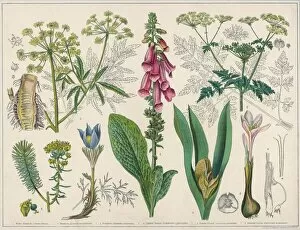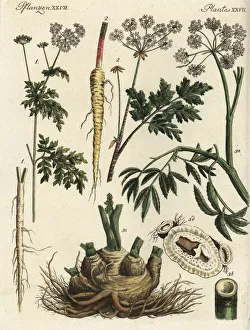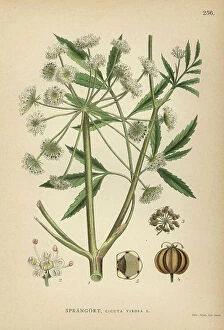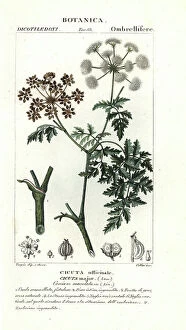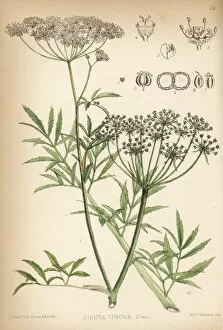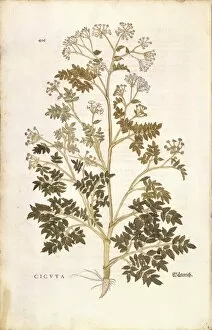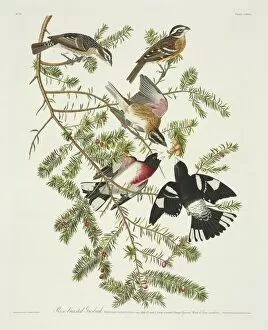Cicuta Collection
"Cicuta: The Deadly Beauty of Poisonous Plants" Step into the world of poisonous plants with this captivating lithograph from 1895, showcasing the infamous "cicuta
All Professionally Made to Order for Quick Shipping
"Cicuta: The Deadly Beauty of Poisonous Plants" Step into the world of poisonous plants with this captivating lithograph from 1895, showcasing the infamous "cicuta. " Known for its toxic properties, cicuta belongs to a group of deadly plants that have fascinated botanists and philosophers throughout history. Among these lethal species are fools parsley, hemlock, and northern water hemlock. These plants have claimed lives and left their mark on ancient civilizations. Socrates, the renowned Classical Greek Athenian philosopher, met his tragic fate by drinking a cup of hemlock in 399 BC. A plaster sculpture depicting this moment serves as a haunting reminder of the power held within these innocent-looking white flowers. Cicuta virosa, commonly known as white flowered water hemlock or cowbane, is another member of this treacherous family. Its presence has been recorded in various historical texts and illustrations like Leonhart Fuchs' De historia stirpium. The hand-colored engravings from c. 1835 showcase Socrates bidding farewell to his friends before consuming congealed poison – an image that resonates with both beauty and sorrow. Water hemlock's scientific name is Cicuta virosa – a plant notorious for its potency. It shares similarities with northern water hemlock (also known as cowbane), further emphasizing the danger lurking within these seemingly harmless flora. As we explore the legacy through art and literature, we gain insight into humanity's fascination with nature's dark side. From ancient times to modern-day studies on toxicology, our understanding continues to evolve alongside our respect for these potent botanical wonders. So let us delve into the intricate world where beauty meets danger – where cicutas silently thrive amidst cautionary tales passed down through generations. May we learn from history while appreciating the delicate balance between life-giving sustenance and nature's hidden poisons embodied by cicutas like no other.


